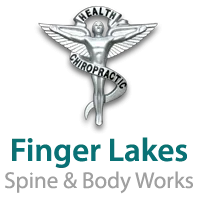
A muscle cramp can bring a jogger to his knees or elicit the fear of drowning in a swimmer; however, athletes are not the only individuals to experience a muscle cramp or spasm. According to one estimate, approximately 95 percent of people will at some time in life experience the sudden, sharp pain associated with a muscle cramp.
A muscle spasm is an involuntary contraction of a muscle, part of a muscle, or several muscles that usually act together. If the spasm is forceful and sustained, it becomes a cramp. Most people describe a muscle cramp as a feeling of tightness in the muscle; it's not unusual to feel a lump of hard muscle tissue underneath the skin in the vicinity of the cramp. During a spasm or cramp, it may be painful, or even difficult, to use the affected muscle or muscle group. Cramps and spasms can affect any muscle, even those affiliated with the body's various organs; however,
they are most common in the calves, hamstrings, and quadriceps. Cramps in the feet, hands, arms, and lower back occur frequently, as well.
Many possible causes
Common as they are and painful as they can be, a shroud of mystery surrounds the cause of muscle spasms and cramps. Some researchers believe that inadequate stretching and muscle fatigue lead to cramps. According to the University of Michigan, other possible factors include a low level of fitness, overexertion (especially in intense heat), stress, and depletion of electrolytes through excess sweating or dehydration. Certain diuretic medications can also cause cramping due to a loss of sodium, potassium, and magnesium.
Treatment of muscle spasms
Typically, muscle cramps require no treatment other than patience and stretching; medicines are not generally needed to treat an ordinary muscle cramp. Gentle and gradual stretching, along with massage, may ease the pain and hasten recovery. When a muscle spasm or cramp is the result of an injury, applying ice packs for the first two to three days may help alleviate the pain. Spasms that last a long time may be treated with moist heat for 20 minutes several times a day.
If you tend to get muscle cramps during exercise, make sure you drink enough fluids, and, after your workout, consider a warm Epsom salt bath followed by stretching of the affected muscles. Generally speaking, water is sufficient for rehydration; however, some may find a sports drink or juice beneficial as a means to restore their body's electrolyte balance. If your muscle cramps are associated with a specific medical condition, keep in mind that you need to address the underlying health problem for the cramps to subside.
Tips for Prevention
As with any health condition, it is always best to prevent muscle cramps or spasms-especially if you tend to develop them. Consider altering your diet and lifestyle by incorporating the following suggestions:
• Take steps to improve your diet. Eliminate sugar and caffeine from the diet, and increase consumption of fiber and protein. In addition, remember to eat plenty of calcium- and magnesium-
rich foods, such as green leafy vegetables, yogurt, legumes, whole grains, tofu, and Brazil nuts. High-potassium foods, including bananas, avocados, lima beans, and fish, may also be helpful.
• Before and after you exercise, stretch muscle groups that tend to cramp.
• Incorporate strengthening exercises into your fitness routine.
• Avoid dehydration. To prevent dehydration, consume plenty of fluids and foods high in water such as fruits and vegetables.
• Avoid excess sodium and soda (high in phosphoric acid), as they can leach calcium.
• Avoid chocolate, caffeine, and alcohol, which can interfere with magnesium absorption.
• Improve your posture. For example, you may have mid-back spasms after sitting at a computer
desk for too long in an awkward position.
Vitamin E has been said to help minimize cramp occurrence. Although scientific studies documenting this effect are lacking, anecdotal reports are common and fairly enthusiastic. Since vitamin E is thought to have other beneficial health effects and is not toxic in usual doses, taking 400 units of vitamin E daily could be considered.
Discuss with your doctor of chiropractic if your cramps are severe, happen frequently, respond poorly to simple treatments, or are not related to obvious causes like strenuous exercise. These could indicate a possible problem with circulation, nerves, metabolism, hormones, medications, and/or nutrition.
Resources
1. Gornel, D. Muscle Cramps of Skeletal Muscles. Retrieved June 22, 2009, from: www.MedicineNet.com.
2. Muscle Cramp. Retrieved June 22, 2009, from the May Clinic Web site: www.mayoclinic.com/health/musclecramp/ DS00311/METHOD=print.
3. Rouziet, P. Muscle Spasms. Retrieved June 22, 2009, from the University of Michigan Health System Web site: www.med.umich.edu/1libr/aha/aha_musspasm_sma.htm.
4. University of Maryland Complementary and Alternative Medicine Index. Retrieved June 22, 2009, from: www.umm.edu/altmed/.
